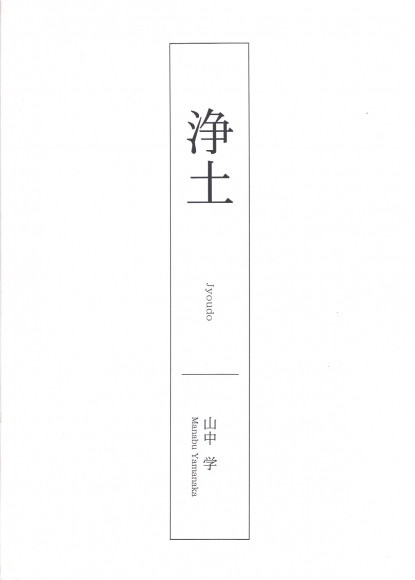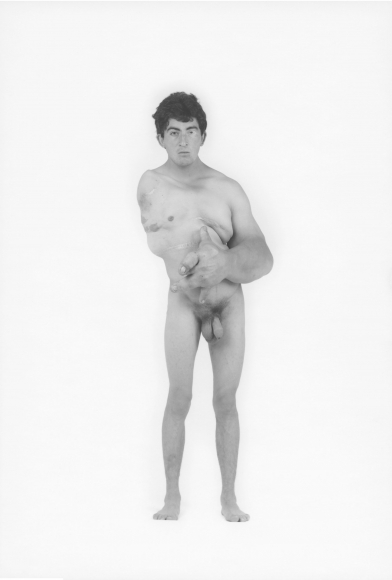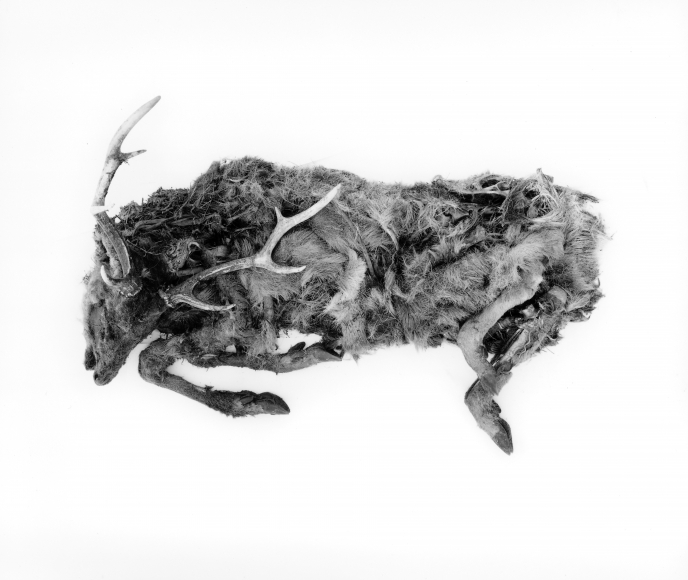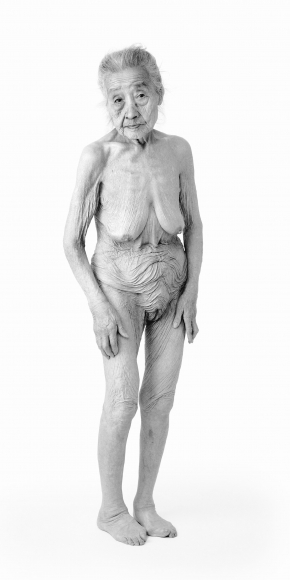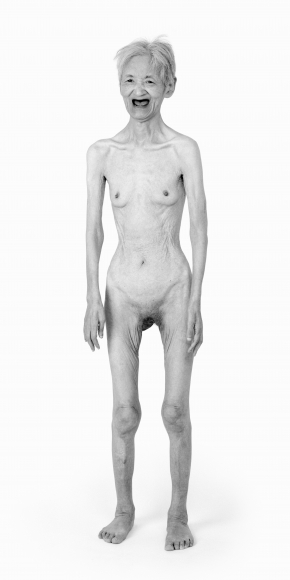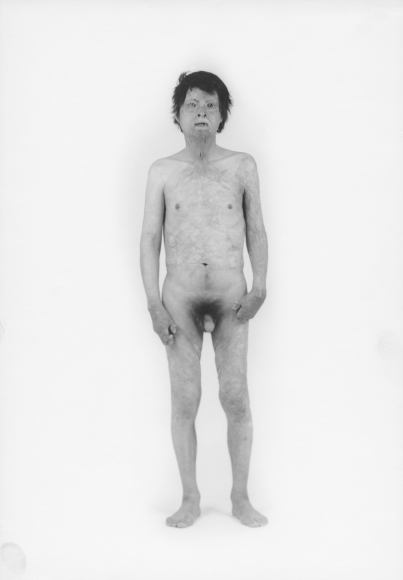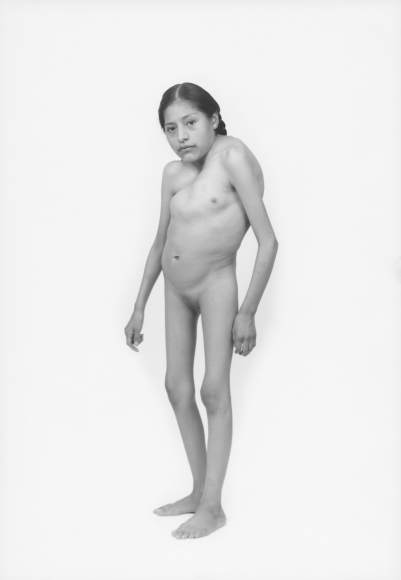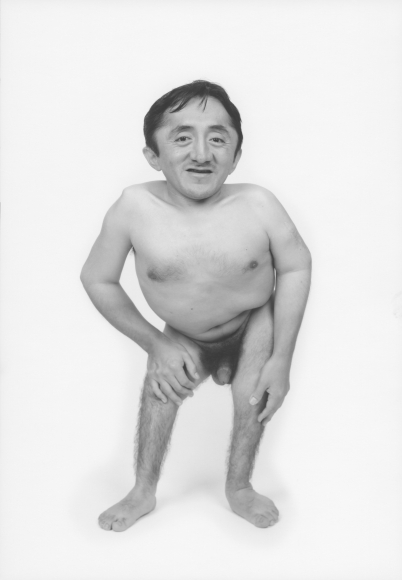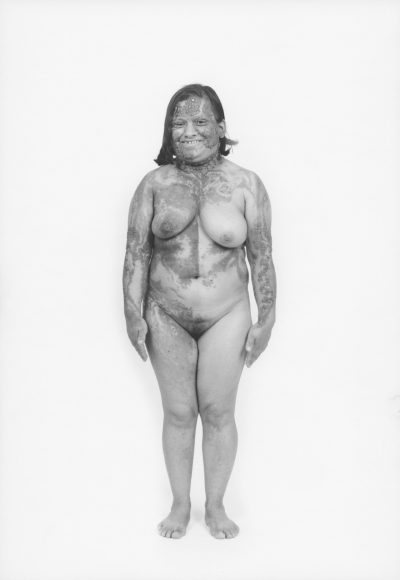Manabu Yamanaka Rare Book of Photographs 2004
Rare out of print english publication of photographs by Manabu Yamanaka, published by Stefan Stux Galllery, New York in 2004. Purchased same year directly from the gallery, at the time of the exhibition. Measures 8.25 inches width x 11.5 inches height. 30 illustrated pages with text, intro, biography, etc. Some mild aging & mild creases. Includes cd/disk of images. Asking USD$150.
Yamanaka’s Jyoudo series takes an unflinching look at the afflicted – people born with various congenital defects, suffering from debilitating diseases, or otherwise crippled and deformed in accidents or mishaps. Posed against a stark, white, seamless backdrop, the physical details of his nude sitters’ conditions are revealed with almost clinical clarity in these large black and white photographs. However, the carefully constructed, insistently aesthetic emphasis of these images provides a fundamentally different mode in which to encounter these people – rather than reacting to them by recoiling in horror or responding with condescending pity, we are called to meditate on their fates with detachment, and to see something of them beyond their infirmities.
Manabu Yamanaka approaches photography as a fundamental mode of knowing, a way of coming to grips with the people he encounters in the world. It’s true that since the medium’s invention, its most consistently popular subject has been the portrait, and with good reason – it’s a way of encountering others in intimate detail, probing the image with the otherwise inappropriately rapt gaze of a lover, transcending the normal social restrictions that prevent us from staring at someone who is physically present. His reserved photographic style echoes the great portraitists before him, from August Sander to Richard Avedon, who similarly emphasized elegant formal structure while simultaneously presenting deeply insightful windows onto the lives of their sitters.
For Yamanaka, this is a Buddhist exercise in compassionate contemplation, an opportunity for him to recognize “the presence of the Bodhisattva within their bodies.” These images offer an opportunity to experience the unique power of Yamanaka’s photographic aesthetic to reveal particularly poignant truths.
-Beth Wilson
Manabu Yamanaka’s six series of photographs, Arakan, Fujohkan, Gyahtei, Dohshi, Jyoudo, and Wukong Mang Mang Ran are representing Yamanaka’s photographic work over the past thirty years. The photographs show compelling oversize, black and white images of people and animals that reflect Yamanaka’s personal faith in Buddhism. The images reference Buddhist beliefs in the inherent beauty of life and its transient nature. In a photo world, where digital manipulation is so widespread, especially when images challenge conventional ideas of representation, it is noteworthy that none of Yamanaka’s photographs are manipulated in any way despite any expectations to the contrary. All of his works are totally faithful to the physical identity of the subject matter.
Artist Statement:
My Buddhist beliefs began during my childhood in the Osaka suburb of Amagasaki, a deeply Buddhist neighborhood inhabited by large numbers of factory laborers. There, Buddhist festivals served as a community focal point and helped to strengthen the faith of local residents. When I was small, I was injured in a serious traffic accident, which put me in the hospital, wavering between life and death for 10 days. But fortunately, quite miraculously, I survived. Meanwhile, I found that my beloved pet dog had died in my stead. So, after having received a second lease on life, I felt myself increasingly drawn to Buddhism, and turned my energies to the creation of Buddhist-influenced art through the medium of photography. Therefore I decided to pursue my own style. In Tokyo in 1989, I had my first art exhibition, featuring my “Arakan” series.
Manabu Yamanaka was born in 1959 in Hyogo, Japan, and currently is based in Tokyo. Yamanaka’s work has been collected by private and public art institutions and has been exhibited regularly in international exhibitions and museums in Austria, Denmark, Germany, Switzerland, Finland, Spain, Chile, Japan and USA. The Gyathei series received worldwide television coverage by CNN when exhibited for the first time at Stux Gallery, New York.
